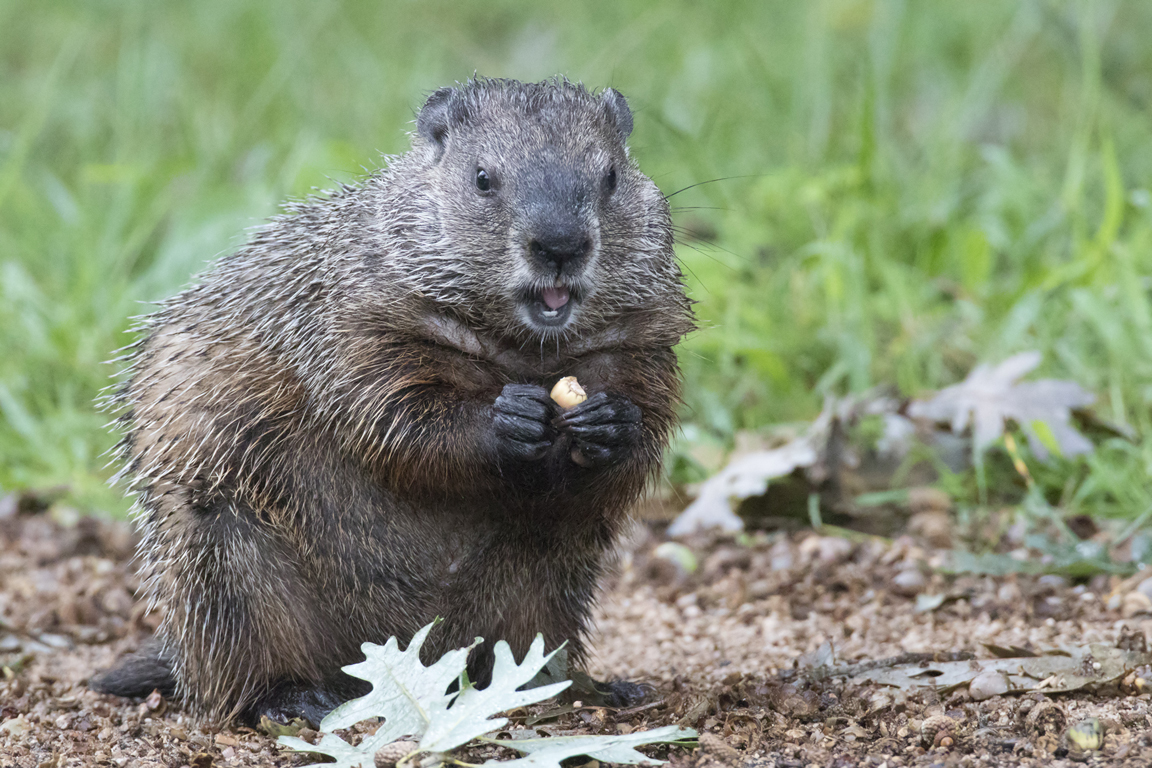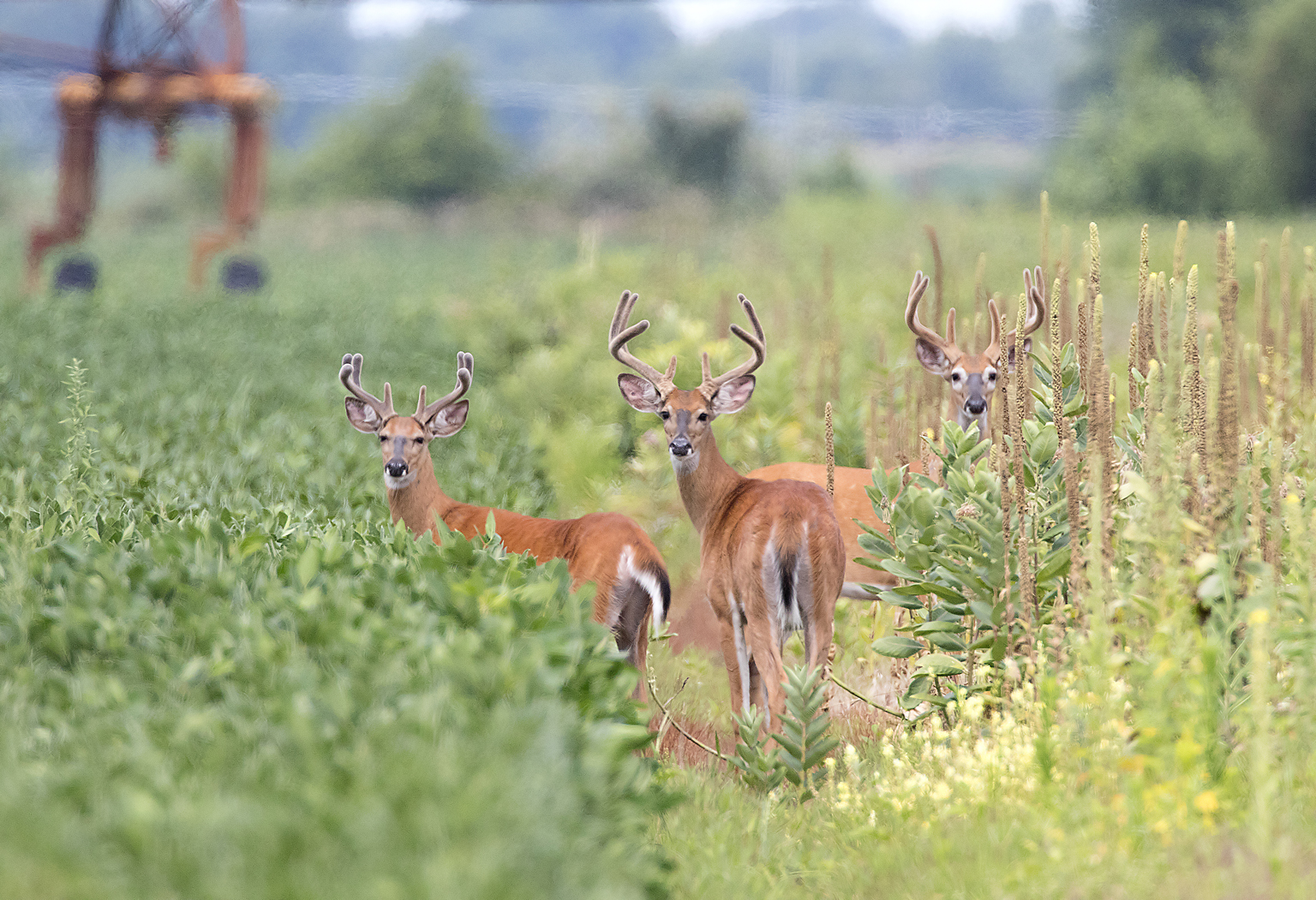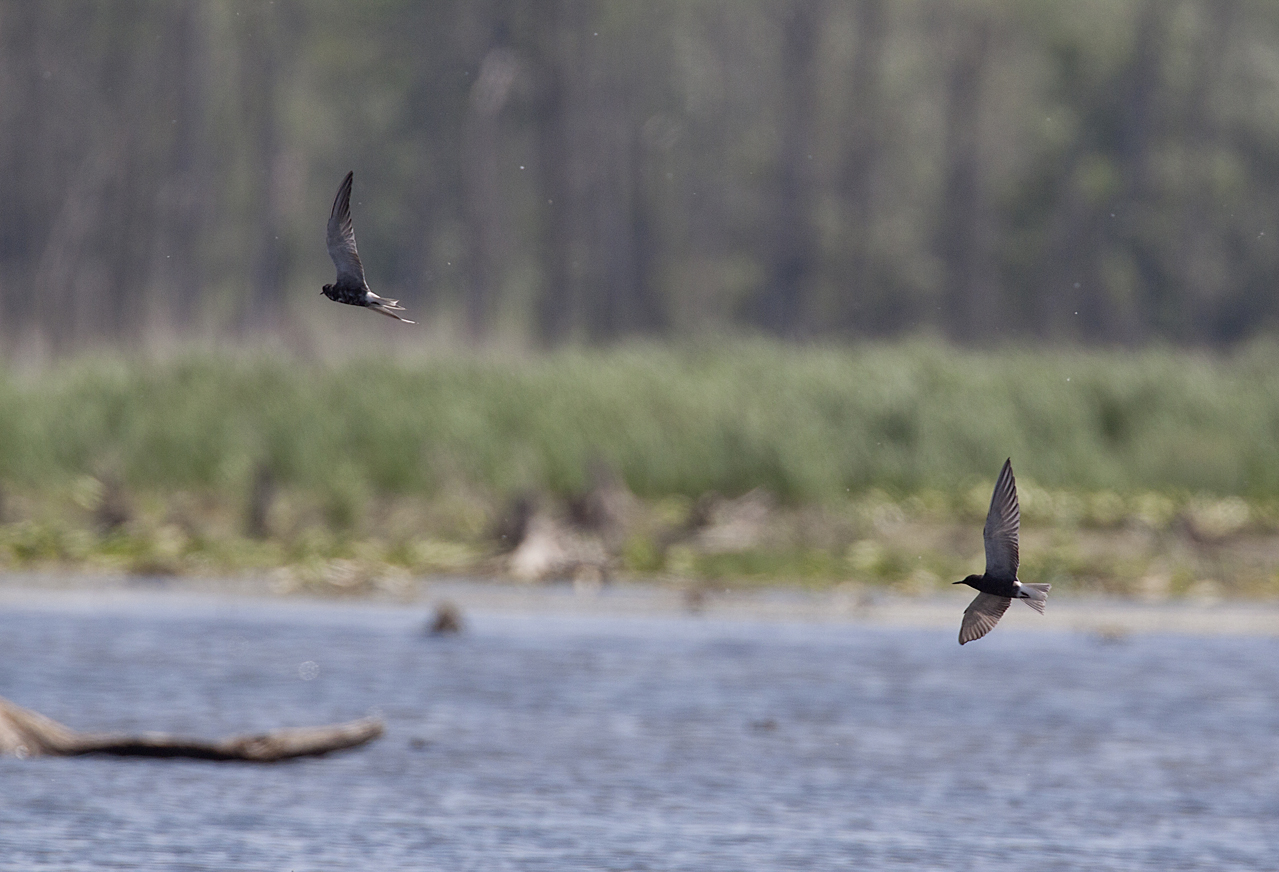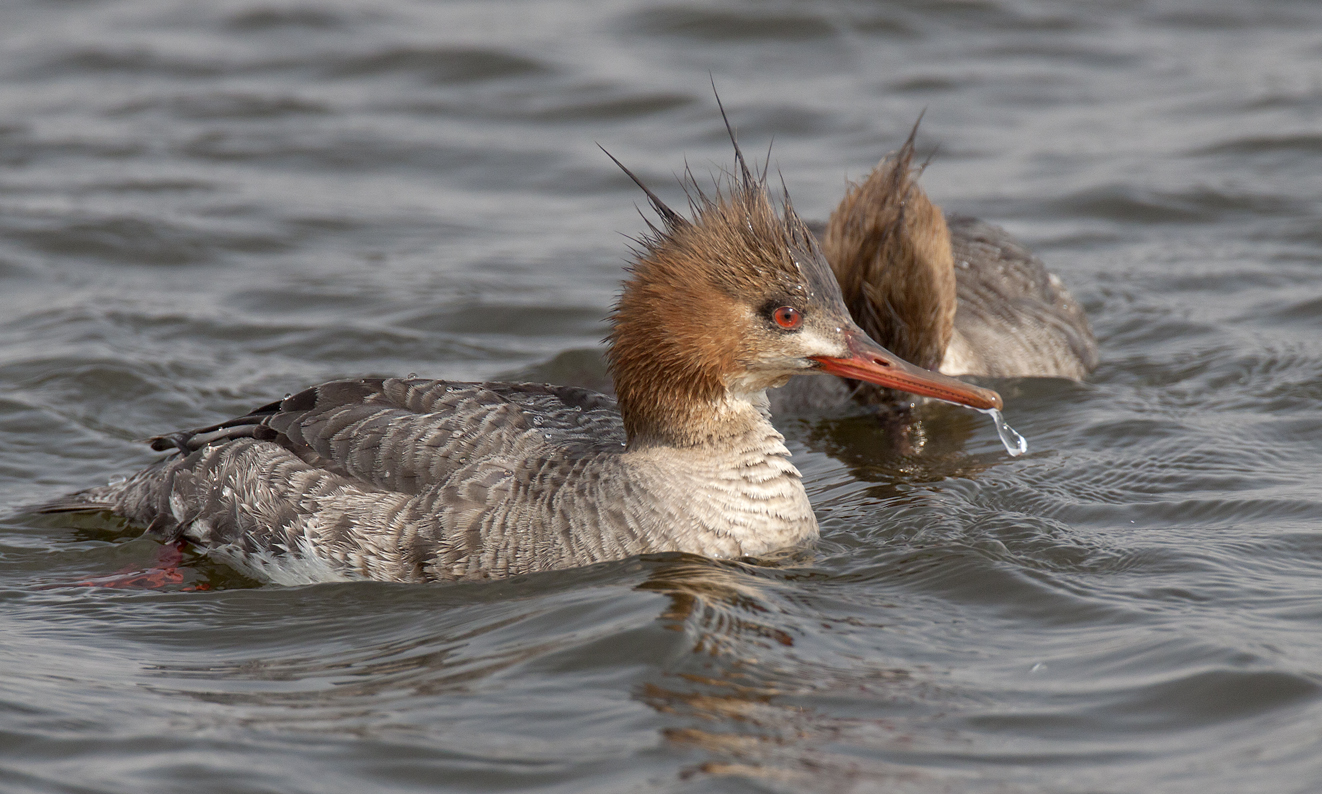
A Ruby-Throated hummingbird hovers at the flower of a Jewelweed plant. The bird picks up pollen on the top of its’ beak and face as it laps up nectar from inside the bloom.
September 10, 2018 – The remarkable native plant Orange Jewelweed (Impatiens capensis) goes by many names like spotted, common, spotted touch-me-not and orange balsam. The Jewelweed grows in most counties in Illinois and prefers moist and partly shaded areas. It thrives in low marshy ground, along creeks and trails and the damp areas in and along the forest edge. Appearing like hundreds of tiny silvered-glass mirrors glistening in the morning light, the delicate droplets of condensation that cover the leafs and flowers of a large patch of Orange Jewelweed will cause any traveler to stop and take notice. Blooming from mid-summer until a hard frost the showy flowers of the Jewelweed, with their red-orange speckles and a beautifully curved spur, attract butterflies, bees and other small insects that are in-search of that glorious nectar.
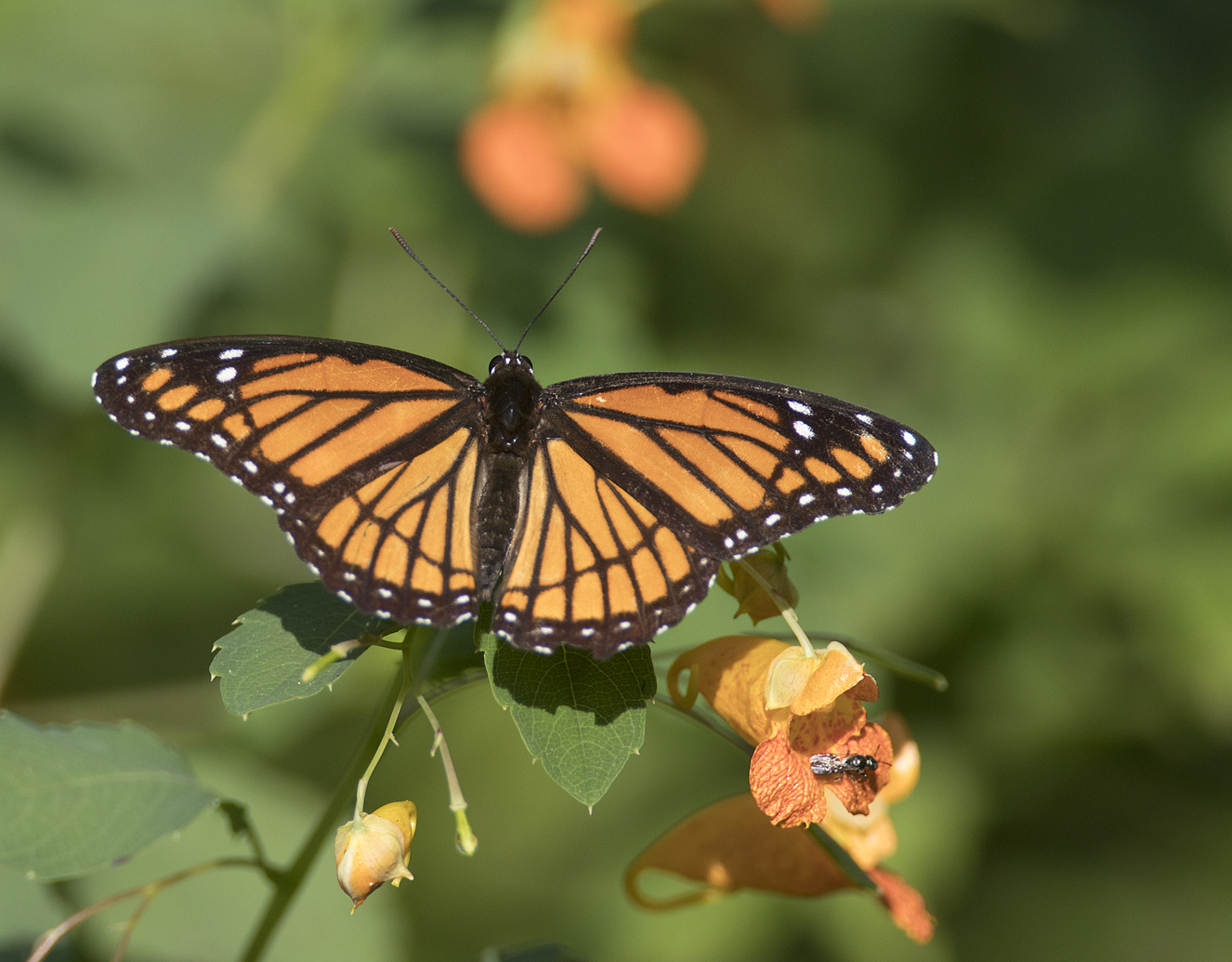
The flowers of the Orange Jewelweed attract many type of insects like this Viceroy butterfly
and the small Sweat bee on the flowers drooping petal.
It is not unusual to see high numbers of Ruby-Throated Hummingbirds, one of the main pollinators of the Jewelweed, busily going from flower to flower through the thick growth of the yellow bounty. When it comes to the season for the Orange Jewelweed to bloom Hummingbirds will certainly be seen in these semi-shaded areas perched at the tip of a long tree branch extending out and over the nectar rich plants. The tiny birds will commandeer a small sapling or tall bush surrounded by the Jewelweed while they vigorously guard their claimed part of the patch. Directly from our planets botanical pharmacy and well-known for generations by the Native Americans, the sap and leaves from the Jewelweed plant have apparent medicinal uses. Jewelweed can be used as a topical ointment for poison ivy, oak and the itching and pain caused by hives, stinging nettle, insect bites and other skin irritations. The sap has also been used as a successful to
Reference:
“Orange Jewelweed (Impatiens Capensis).” Touch-Me-Not family (Balsaminaceae) www.illinoiswildflowers.info/wetland/plants/or_jewelweed.htm.
“For Your Garden – June 2015.” Education, www.dnr.illinois.gov/education/Pages/FYGJun2015.aspx.
“Impatiens Capensis.” Wikipedia, Wikimedia Foundation, 27 Sept. 2018, en.wikipedia.org/wiki/Impatiens_capensis.
“Plant of the Week.” Johnston Ridge Observatory | US Forest Service, www.fs.fed.us/wildflowers/plant-of-the-week/impatiens_capensis.shtml.
pical anti-fungal treatment.
